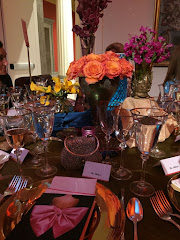Dear Ms. Fiori,
Thank y'all for your article: "The Lady and the Vamp," by Molly Haskell in your February 2009 issue. It was refreshing to read an article about a few 'characters' outside of New York City. The complicated and controversial Scarlett and the sweet, simple yet steely Melanie characters from "Gone with the Wind" are more alike than first glance gives us. They admired, complimented, tolerated, loved and forgave each other. Forgiveness. Not a quality recently seen on Reality TV (or what I call 'mean TV'), in movies, books or other print media.
Speaking of forgiveness, The Margaret Mitchell House and Museum in Atlanta is where the true reality of my revealing and relevant story particular to our time begins. Margaret Mitchell lived in this two story house for seven years while writing her Pulitzer-Prize winning novel, Gone with the Wind. This historic site scrapes by and struggles to survive not only because donors and donations are few, but because some regard Gone with the Wind to be a racist movie and book (I wonder how many people have actually read the book), and repeatedly keep trying to burn down the house.
The tour starts out typically enough with a walk through the house, then her apartment which is furnished with "alike furnishings and a typewriter of the period" from, as we were told by the guide, Goodwill. A bit shocking. The first treat, however, was the mahogany lion head gargoyle adorning the staircase outside of Margaret Mitchell's apartment. Upon entering and exiting her small, ground floor home she rubbed the lion head for good luck.
Down the stairs of the house into the brick basement we were shuffled for the second half of the tour. Immediately upon entering, under glass and on the brick walls were many of Margaret Mitchell's letters to her family and relatives there for our viewing and reading. In perusing this remarkable collection of letters, one can see the natural writer in Margaret Mitchell's soul. A God calling in her life she thankfully answered to. Then, the tour took a most unexpected turn after rounding the corner.
In plain view were approximately 30 very nicely produced photographs of Martin Luther King, Jr., by Bob Adelman. Large, vivid, striking portraits of the men and of the time.
Quietly in the middle of the exhibit hung a black & white photograph of a ten year old Martin Luther King, Jr., standing on the front stairs of what was a Hollywood 'mock up' of Tara, singing 'Negro Spirituals' with the Ebenezer Baptist Church Choir for the 1939 Gone with the Wind movie Premiere Ball. His father was the choir director.
Surrounding the choir, milling about the grounds, was Atlanta's privileged society enjoying their privileges. An all white audience, white men stood in their white tie, top hat and white gloves, white ladies watched in their furs, beautiful ball gowns, white gloves and evening clutches. Some members of this polite society were photographed listing casually to the choir, as others were seemingly there to see and be seen.
Then, the stark reality hit. There stood Martin Luther King, Jr., as a boy, part of the entertainment for the cream of a society that in 1939 he was not allowed to be a participant. Amazingly, as an adult, he rose like cream to the top, emerging in an American society not only as a grand figure of national importance, but as a tolerant, important role model for his generation and future generations to come.
My Father always said: 'The cream rises to the top,' and it does. And it has. Maybe it is time for us all to find a little forgiveness in our hearts, souls and our lives.
Subscribe to:
Comments (Atom)









